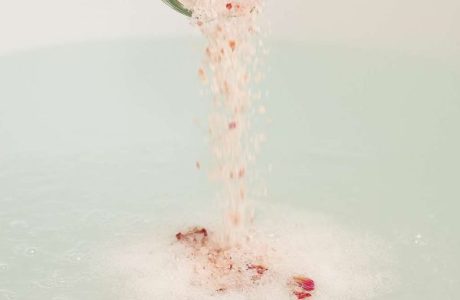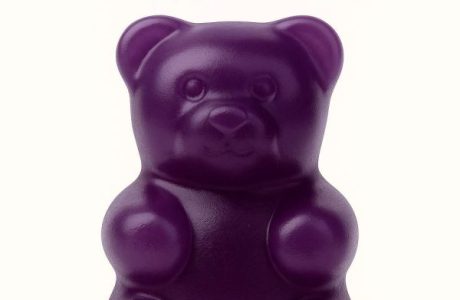Always a fan of all things “Natural” We all know breastmilk is best but have any of you considered the effect breastmilk could quite possibly have on the skin and by skin I mean the WHOLE body !!!
We use Goats Milk in soap to alleviate all types of skin problems. Imagine the possibilities if we started using our “own” milk to make soap. Some women have an abundance of milk so if you’ve got it use it I say.
The following recipe courtesy of Casey Makela of Gently Borne Midwifery Services will make some of the most wonderful and precious soap you will ever use. Considered “Radical” by some I love this concept. This recipe will make up to 8 pounds of soap so halve the recipe to make less.
You Will Need
3 lbs. vegetable shortening
17 ounces dark olive oil
18 ounces Safflower oil
6 cups thawed breast milk
(you can use any amount of breast milk you like and substitute the rest,
just make sure your total fluid volume reaches 6 cups).
12 ounces pure sodium hydroxide (lye – Red Devil brand works)
1 ounce Borax
2 TLBS honey
1 ounce Essential oil – optional
Ice Cubes
Tool List:
Stainless steel pans
Wooden or stainless steel spoons
Newspaper to cover counter tops
Candy thermometer
Measuring cup
Scale
Blender
***Wear Gloves and protective eye-wear when making soap…lye burns!!
****Use only stainless steel pans for making soap – DO NOT use aluminium!!
Procedure
Melt the veg. shortening in a saucepan (about 8 quart size)and add the oils. Bring temp up slowly until the shortening is all melted. Don’t overheat or scorch the oils.
Plug your kitchen sink. Fill halfway with water and add about 3 dozen ice cubes.
Put thawed cold breast milk in a saucepan (about 3 quart size). Place the saucepan into the water. You *must* keep the milk cool when you add the lye to it or the lye will burn it and make it unusable, not to mention real stinky!
Slowly stir in the sodium hydroxide (lye) stirring constantly and occasionally circulating the outer ice water. The lye is going to heat the milk up as you stir it in. Avoid breathing the fumes by working in a well-ventilated area.
Adding the lye should take at least 5 minutes, any faster and you will burn out your milk. If you accidentally splash any on yourself, rinse immediately!
Once combined, continue to stir the milk/lye mixture for just a few more minutes (3) and then remove from the water bath and set aside. You will notice that the milk/lye mixture steadily becomes yellowish in color. That is normal.
Add the honey and borax to your melted oil which should still be warm but not hot (115 degrees or so).
Now, slowly and carefully pour the milk/lye mixture into the pan of oil. Stir constantly until it is all mixed together.
This mixture must now be whipped in a blender (2/3’s full at a time for safety sake). Run the blender (with the lid on) at whip speed for 60 seconds each time. Pour off into a clean pan.
Repeat the blender process a second time. This is when you will add your essential oils.
Once the mixture has been blended twice, it will be ready to pour into a mold where it will saponify and be ready to cut after 24 hours.
**Make sure to set a few bars secretly aside for that someday when it could make a touching “Treasured Memory Gift” maybe when your child is all grown up. The soap will never go rancid (no matter what you may have read elsewhere), it will only improve with age. Mothering Soap has the unique potential of becoming something extra, special as the years roll by. But that’s just this mothers thought!
NOTE: The heavy duty molds I use for soap making are made of extruded vinyl. They are reusable and very easy to use – once it saponifies, you just slice the soap into bars, no fuss. These molds and many other soapmaking supplies are available at the Soap Shoppe page located at my Natural Soap Site – Killmaster Soapworks Natural Soap Company
SOME THINGS TO TAKE NOTE OF THOUGH
This soap is for personal, not commercial use. I would like to caution you about the issue of bio-hazards if you decide to work with someone else’s breast milk for soap making. Please be responsible and use precautions when handling raw, unpasteurized human milk.
Before you start this project, make sure you have enough milk!! It will take time to accumulate it all but you can do it!!
You will need to pump and store your milk in the freezer until you have at least one cup or as much as 6 cups. Add a little beer to your diet, it might help production!
This milk does not have to be pasteurized…and its condition once thawed can be variable, don’t worry about that!
**Please do not use colostrum. Your baby needs it all, that is liquid gold so don’t sell your babe short. A good time to start collecting milk for this project would be about a month after you have established breast feeding. Your important infant/mother bond comes first!!
Looking for more Goat’s Milk recipes? Check out our DIY recipe for making your own goat’s milk lip chapstick. The Goat’s milk in this DIY Goat’s Milk Chapstick recipe will leave your lips soft and smooth. The PH Level in goat’s milk is super skin-friendly and the lactic acid helps remove dead skin cells from your lips for a soft and brighter smile. The ingredients are so basic for making this lip balm you will be surprised, you may even have the chapstick ingredients in your fridge or pantry.






Just a thought about the comment of drinking a little beer to help have “better production” of milk…. perhaps only recommend that to mothers who are finished feeding their babies already, and not to still-nursing mothers.
Does it matter how long the milk has been in the freezer? I have a bunch that my baby doesn’t drink but they are a year old already. I don’t think I should be donating this to others because it is old….
Also, once I make them, how long does it last? I don’t need to put them in the fridge right?
Help on baby dry skin?
Thanks!!